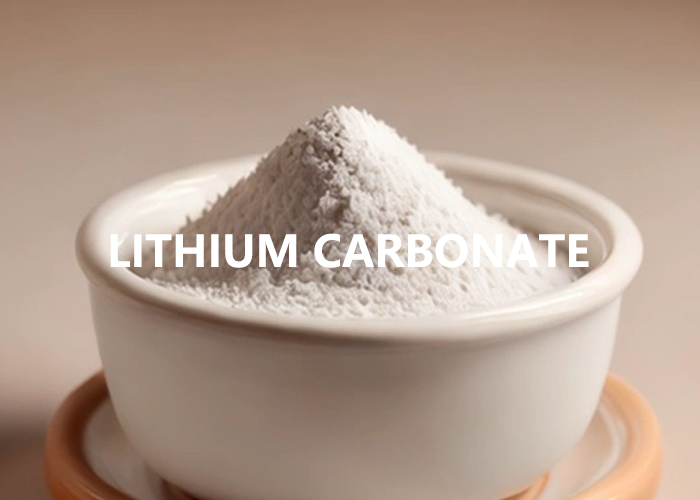Lithium Carbonate: Properties, Applications, and Market Dynamics
1. Purity and Product Grades
Generally speaking, for a given application, the performance of lithium carbonate is determined by its purity and grade. Lithium carbonate battery grade is manufactured with a purity above 99.5%, ensuring excellent electrochemical stability when used in lithium-ion cathode materials. Industrial-grade lithium carbonate, with slightly lower purity, is commonly used in glass, ceramics, and metallurgy applications where tolerance for impurities is higher.
The product must be sufficiently pure to prevent contamination in sensitive downstream applications. Furthermore, the handling, packaging, and storage of lithium carbonate must be controlled to ensure that powdered and granular materials do not absorb moisture or degrade during transportation. A reliable lithium carbonate supplier provides both technical support and quality assurance to meet these standards.
2. Particle Size and Morphology
The appropriate particle size distribution depends largely on the required reactivity and the end-use process. The following factors should be considered when selecting particle size:
Battery cathodes: Fine particle distribution in lithium carbonate battery grade materials enhances reactivity with precursors, leading to improved capacity and longer battery cycle life.
Glass and ceramics: Larger particle size is acceptable, since uniformity is less critical and cost efficiency is a priority.
Pharmaceuticals: Narrow particle distribution ensures precise formulation and safety compliance.
The ability of a lithium carbonate supplier to control particle size is a key factor for customers evaluating material consistency and performance.
3. Production Methods and Process Control
The production route significantly affects cost and quality. At present, lithium carbonate is produced mainly through two processes:
Brine extraction: This method involves processing lithium-rich brines, commonly found in South America. It is energy-efficient and cost-effective but is influenced by climate and water availability.
Spodumene conversion: Hard rock minerals are calcined and processed to produce lithium carbonate. Although more energy-intensive, it provides a stable and scalable supply chain.
Both methods must meet rigorous quality control standards to produce lithium carbonate battery grade material suitable for advanced energy storage. Market competition among each lithium carbonate supplier depends on process efficiency, sustainability, and long-term reliability.
4. Application Areas
Lithium carbonate plays a vital role across multiple industries, with demand rising significantly due to the growth of electric vehicles and renewable energy.
Lithium-ion batteries
The largest consumption segment for lithium carbonate battery grade.
Used in cathode chemistries such as lithium cobalt oxide (LCO), lithium nickel manganese cobalt oxide (NMC), and lithium iron phosphate (LFP).
A key driver behind the global lithium carbonate price trend.
Glass and ceramics
Improves thermal stability, reduces melting point, and increases strength.
Industrial users often select a cost-effective grade from a dependable lithium carbonate supplier.
Metallurgy and aluminum smelting
Functions as a fluxing agent to remove impurities and optimize production.
Pharmaceuticals
Used in medical formulations for mood stabilization.
Requires stringent safety and purity standards.
5. Cost and Market Dynamics
The price of lithium carbonate has become a key focus for global industries. The lithium carbonate price trend is highly volatile, influenced by EV demand, renewable energy adoption, and supply chain conditions.
In periods of strong demand, lithium carbonate battery grade prices rise sharply due to limited supply capacity.
Industrial consumers often rely on a stable lithium carbonate supplier network to mitigate cost fluctuations.
Governments and industries closely monitor the lithium carbonate price trend to plan investments and control production costs.
Under the same demand conditions, two strategies are commonly adopted:
Secure premium lithium carbonate battery grade at higher cost for long-term stability in battery manufacturing.
Choose industrial-grade material from a lithium carbonate supplier to balance cost and performance in ceramics or glass.
6. Selection Guidelines
When selecting the appropriate lithium carbonate for production, the following considerations are critical:
Grade and Purity
Lithium carbonate battery grade for energy storage, EVs, and advanced electronics.
Industrial-grade for cost-sensitive applications.
Particle Size Distribution
Fine and uniform for batteries.
Coarser acceptable for ceramics.
Supplier Reliability
Partnering with a global lithium carbonate supplier ensures consistent supply, technical support, and better planning against market fluctuations.
Market Awareness
Continuous tracking of the lithium carbonate price trend is necessary for budgeting and strategic planning.
Conclusion
Lithium carbonate is one of the most important raw materials driving the global energy transition. From high-performance batteries to ceramics, glass, and pharmaceuticals, it remains irreplaceable in modern industry. The rapid expansion of electric vehicles and renewable energy systems ensures that lithium carbonate battery grade will remain in high demand.
Meanwhile, industrial users depend on a trustworthy lithium carbonate supplier network to maintain production efficiency and cost control. With the global lithium carbonate price trend showing strong volatility, companies must carefully balance purity, grade, and sourcing strategies.
As markets evolve, lithium carbonate will continue to play a central role in innovation, sustainability, and the future of energy.